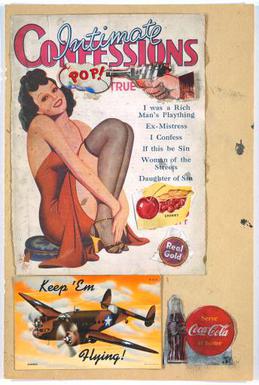
Pop art is an art movement that emerged in the United Kingdom and the United States during the mid- to late-1950s. The movement presented a challenge to traditions of fine art by including imagery from popular and mass culture, such as advertising, comic books and mundane mass-produced objects. One of its aims is to use images of popular culture in art, emphasizing the banal or kitschy elements of any culture, most often through the use of irony. It is also associated with the artists' use of mechanical means of reproduction or rendering techniques. In pop art, material is sometimes visually removed from its known context, isolated, or combined with unrelated material.

Carl Andre is an American minimalist artist recognized for his ordered linear and grid format sculptures and for the suspected murder of contemporary artist and wife, Ana Mendieta. His sculptures range from large public artworks, to large interior works exhibited on the floor, to small intimate works.
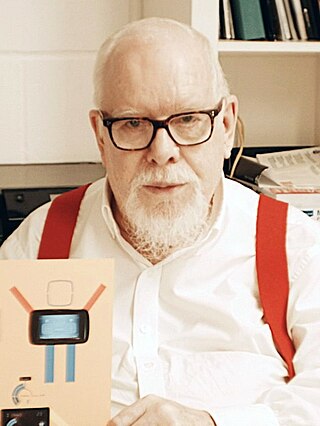
Sir Peter Thomas Blake is an English pop artist. He co-created the sleeve design for the Beatles' 1967 album Sgt. Pepper's Lonely Hearts Club Band. His other works include the covers for two of The Who's albums, the cover of the Band Aid single "Do They Know It's Christmas?", and the Live Aid concert poster. Blake also designed the 2012 Brit Award statuette.
Allen Jones is a British pop artist best known for his paintings, sculptures, and lithography. He was awarded the Prix des Jeunes Artistes at the 1963 Paris Biennale. He is a Senior Academician at the Royal Academy of Arts. In 2017 he returned to his home town to receive the award Honorary Doctor of Arts from Southampton Solent University

Richard William Hamilton CH was an English painter and collage artist. His 1955 exhibition Man, Machine and Motion and his 1956 collage Just what is it that makes today's homes so different, so appealing?, produced for the This Is Tomorrow exhibition of the Independent Group in London, are considered by critics and historians to be among the earliest works of pop art. A major retrospective of his work was at Tate Modern until May 2014.
Events from the year 1962 in art.

Anthony Green was an English realist painter and printmaker best known for his paintings of his own middle-class domestic life. His works sometimes used compound perspectives and polygonal forms—particularly with large, irregularly shaped canvasses. As well as producing oil paintings, he also produced a number of works designed from the start as limited edition prints, which were typically giclée works.
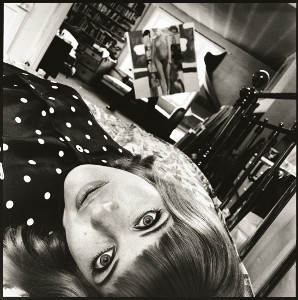
Pauline Boty was a British painter and co-founder of the 1960s' British Pop art movement of which she was the only acknowledged female member. Boty's paintings and collages often demonstrate a joy in self-assured femininity and female sexuality, as well as criticism of the "man's world" in which she lived. Her rebellious art, combined with her free-spirited lifestyle, has made Boty a herald of 1970s' feminism.
Derek Boshier is an English artist, among the first proponents of British pop art. He works in various media including painting, drawing, collage, and sculpture. In the 1970s he shifted from painting to photography, film, video, assemblage, and installations, but he returned to painting by the end of the decade. Addressing the question of what shapes his work, Boshier once stated "Most important is life itself, my sources tend to be current events, personal events, social and political situations, and a sense of place and places". His work uses popular culture and the mixing of high and low culture to confront government, revolution, sex, technology and war with subversive dark humor.
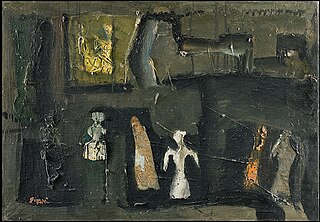
Mario Sironi was an Italian modernist artist who was active as a painter, sculptor, illustrator, and designer. His typically somber paintings are characterized by massive, immobile forms.
Callum Innes is a Scottish abstract painter, a former Turner Prize nominee and winner of the Jerwood Painting Prize. He lives and works in Edinburgh, Scotland.
Keith Piper is a British artist, curator, critic and academic. He was a founder member of the groundbreaking BLK Art Group, an association of black British art students, mostly based in the West Midlands region of the UK.
Peter Prendergast was a Welsh landscape painter.
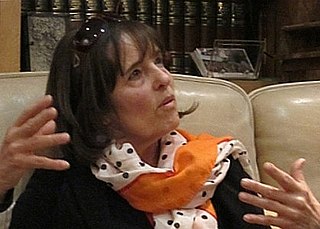
Jann Haworth is a British-American pop artist. A pioneer of soft sculpture, she is best known as the co-creator of The Beatles' 1967 Sgt. Pepper's Lonely Hearts Club Band album cover. Haworth is also an advocate for feminist rights especially for the representation of women in the art world.

Clive Barker is a British pop artist. His work is present in private and museum collections including the Tate in London, the British Museum in London, the National Portrait Gallery in London, the Victoria and Albert museum in London, the Wolverhampton Art Gallery in Wolverhampton, the Museum für Moderne Kunst in Frankfurt, Städtische Kunsthalle Mannheim, the National Gallery of South Australia in Adelaide, the Berardo Collection Museum in Lisbon, the Philadelphia Museum of Art and the Hirshhorn Museum and Sculpture Garden in Washington, D.C.
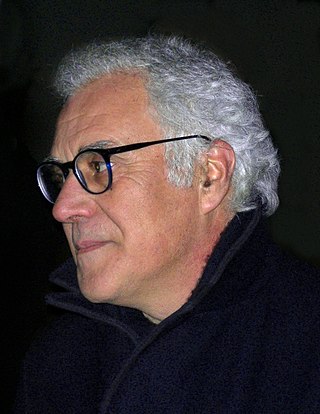
Mimmo Paladino is an Italian sculptor, painter and printmaker. He is a leading name in the Transvanguardia artistic movement and one of the many European artists to revive Expressionism in the 1980s.
Nicholas Monro was an English pop art sculptor, print-maker and art teacher. He is known for being one of the few British pop artists to work in sculpture and is known for his use of fibreglass.

Joseph Charles Tilson is a British artist and fellow of the Royal Academy. He was involved in the Pop Art movement in the 1960s; he has made paintings, prints and constructions.

James Scott is a British filmmaker, painter, draughtsman and printmaker.
Antony Donaldson is a British painter and sculptor, working in London from the beginning of the 1960s. Notable for his development of visual interplay between abstract and popular imagery, his work is associated with the Pop Art movement and known for his paintings of fast cars and women.












